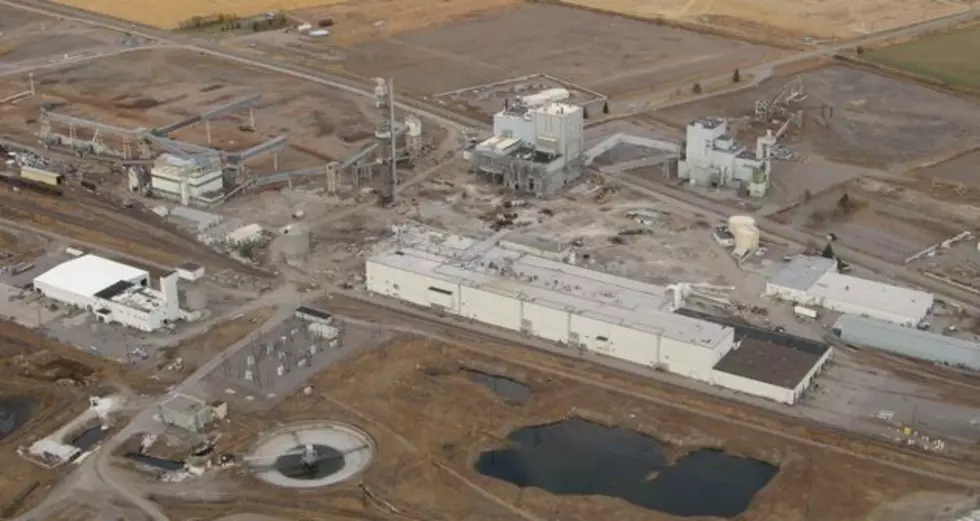
Frenchtown cancer rate is abnormally high; cause unknown
More people have cancer in the Frenchtown area than expected, but there's no evidence the cases are related to the former Smurfit-Stone pulp mill, according to a state epidemiologist.
In fact, the cause of the abnormal incidence is unknown.
During the August meeting of the Smurfit-Stone Mill Site Community Advisory Group, state environmental epidemiologist Connie Garrett said there's no evidence that contamination at the Smurfit-Stone mill site is responsible for the higher rates of cancer found among nearby residents.
Garrett showed the group the results of a survey of cancer cases initiated at the request of a concerned citizen who asked if the mill’s contamination could increase the risk of cancer in people younger than 40.
So the Tumor Registry epidemiologist of the Montana Department of Public Health and Human Services researched all the cancer patients diagnosed with cancer between 2000 and 2017 in an area around the mill.
Since 1979, doctors and hospitals have reported cancer diagnoses and deaths to the Tumor Registry, so it’s invaluable information for identifying places in the state where cancer clusters might exist. However, the information is limited because it doesn’t reveal where else patients have lived or how much cancer-causing agents they have been exposed to.
She then calculated the number of patients that would be expected to have cancer if the rate was the same as that found in Missoula County.
The area encompasses three zip codes on the north side of the Clark Fork River: 59834, which includes the mill site; 59808 along the river between Missoula and the mill; and 59846, a large area extending northwest of the mill.
Overall, the 543 cases diagnosed in the Frenchtown area over the 17-year period was 55 more than expected. But the age breakdown tells more of a story.
For people younger than 40, the Frenchtown region had 40 cancer cases, 14 more than expected. But Garrett said the difference is not statistically significant.
However, for people age 40 to 64, which could account for some of those who worked at the mill, 324 cases were diagnosed. That’s 59 more than expected, which is a significant difference. But “there is not any evidence that the excess cancer cases are caused by the site,” Garrett said.
The trend reversed for those over 65, where the Frenchtown area had 31 fewer than the 210 cases expected.
If contaminants from the mill did play a part in the cancer of middle-aged residents, there are a few potential culprits.
Groundwater tests on the mill property have measured excessive levels of arsenic, which is linked to bladder, lung, kidney and skin cancer or melanoma.
Dioxins, furans and PCBs are also present, but research on their affect on human health is limited and has just begun to show possible links to cancer. With all three, it always depends on the level of exposure.
Dioxins are considered a “known human carcinogen,” but it depends on the amount and duration of exposure. Everyone is now exposed to plastics with low dioxin amounts, which have little effect.
Furans, absorbed by the intestines and liver, may not directly cause cancer but can compromise the body’s ability to fight other cancer agents, according to the European Food Safety Authority.
Finally, PCBs have been associated with an increased risk of melanoma, or cancer in the liver or digestive tract.
That’s why the Environmental Protection Agency must remove these toxins from the property before anyone is allowed to work or live in such a contaminated area.
However, people in the Frenchtown region around the mill site don’t appear to have higher rates of the kinds of cancer associated with these toxins. There were 56 cases of lung cancer, 23 cases of non-Hodgkin lymphoma and 15 cases of leukemia, but these numbers aren’t much different from what would be expected.
Garrett said the five most common types of cancer diagnosed in those younger than 65 were the same and in almost the same proportion as those diagnosed in Missoula County and Montana overall: breast, prostate, melanoma, colorectal and lung cancer, in that order.
Garrett also monitors toxic substances and human health in Columbia Falls, Anaconda, Butte and Billings.
